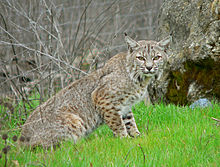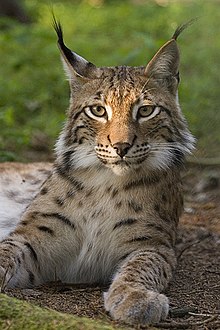Thursday, December 28, 2017
Wild Turkeys at Christmas
And now turkeys...
It turns out turkeys live in the wilderness area around Trout Lake near Telluride, Colorado.
My neighbor sees them eating grass near her house on these cold but snowless winter days.
She took this photo near the house further on down the hill between her house and mine.
Introducing the bobcat...
Below is a link to a l-o-o-o-n-g jump by a bobcat... sorry I can't actually put it on this blog.
https://www.facebook.com/NSelection/videos/10154299607351244/?hc_ref=ARRF1hqVXTjKDDGFdcDOC2Zkov7tGqjmVwPjJ9LBRUeYHHXG2zRi4SiKiYPYFsmms-8&pnref=story
Thanks to my high school classmate Linda Binns Monteith for this video from BBC Planet Earth.
Plenty of time to observe the cat and compare it to the earlier photo of the lynx in our driveway.
Here's what Wikipedia has to say about bobcats: https://en.wikipedia.org/wiki/Bobcat
And here's the intro:
The bobcat (Lynx rufus) is a North American cat that appeared during the Irvingtonian stage of around 1.8 million years ago (AEO).[2] Containing 12 recognized subspecies, it ranges from southern Canada to central Mexico, including most of the contiguous United States. The bobcat is an adaptable predator that inhabits wooded areas, as well as semidesert, urban edge, forest edge, and swampland environments. It remains in some of its original range, but populations are vulnerable to local extinction ("extirpation") by coyotes and domestic animals. With a gray to brown coat, whiskered face, and black-tufted ears, the bobcat resembles the other species of the midsized Lynx genus. It is smaller on average than the Canada lynx, with which it shares parts of its range, but is about twice as large as the domestic cat. It has distinctive black bars on its forelegs and a black-tipped, stubby tail, from which it derives its name.
Though the bobcat prefers rabbits and hares, it hunts insects, chickens, geese and other birds, small rodents, and deer. Prey selection depends on location and habitat, season, and abundance. Like most cats, the bobcat is territorial and largely solitary, although with some overlap in home ranges. It uses several methods to mark its territorial boundaries, including claw marks and deposits of urine or feces. The bobcat breeds from winter into spring and has a gestation period of about two months.
Wednesday, December 20, 2017
Identifying the lynx...
So here's the info on lynxes... Thank you, Wikipedia!
Lynx have a short tail, characteristic tufts of black hair on the tips of their ears, large, padded paws for walking on snow and long whiskers on the face. Under their neck, they have a ruff which has black bars resembling a bow tie although this is often not visible.
Body colour varies from medium brown to goldish to beige-white, and is occasionally marked with dark brown spots, especially on the limbs. All species of lynx have white fur on their chests, bellies and on the insides of their legs, fur which is an extension of the chest and belly fur. The lynx's colouring, fur length and paw size vary according to the climate in their range. In the Southwestern United States, they are short-haired, dark in colour and their paws are smaller and less padded. As climates get colder and more northerly, lynx have progressively thicker fur, lighter colour, and their paws are larger and more padded to adapt to the snow. Their paws may be larger than a human hand or foot.
The smallest species are the bobcat and the Canada lynx, while the largest is the Eurasian lynx, with considerable variations within species.
| Species | Weight | Length | Height (standing at shoulders) | |
|---|---|---|---|---|
| Eurasian lynx | males | 18 to 30 kilograms (40 to 66 lb) | 81 to 129 centimetres (32 to 51 in) | 70 centimetres (28 in)[5] |
| females | 18 kilograms (40 lb) | |||
| Canada lynx | 8 to 11 kilograms (18 to 24 lb) | 80 to 105 centimetres (31 to 41 in) | 48 to 56 centimetres (19 to 22 in)[6] | |
| Iberian lynx | males | 12.9 kilograms (28 lb) | 85 to 110 centimetres (33 to 43 in) | 60 to 70 centimetres (24 to 28 in)[7][8][9] |
| females | 9.4 kilograms (21 lb) | |||
| Bobcat | males | 7.3 to 14 kilograms (16 to 31 lb)[10] | 71 to 100 centimetres (28 to 39 in)[10] | 51 to 61 centimetres (20 to 24 in)[11] |
| females | 9.1 kilograms (20 lb) |
Species
The four living species of the Lynx genus are believed to have evolved from the "Issoire lynx", which lived in Europe and Africa during the late Pliocene to early Pleistocene. The Pliocene felid Felis rexroadensisfrom North America has been proposed as an even earlier ancestor; however, this was larger than any living species, and is not currently classified as a true lynx.[12]
Saturday, December 9, 2017
A well-fed cat...
 |
| Here, kitty, kitty... |
Is this visitor a bobcat or a lynx? It's walking down the driveway of my house at Trout Lake as if it owns the place... which I guess it does, 90% of the year.
I contacted Telluride native Jack Pera, who has done lots of nature photography around San Miguel County, with this question.
Here's his answer:
The photo of the 'cat is indeed that of a lynx. I can tell by the color. There are other identification marks but the photo isn't good enough to point those out. (Extremely large feet, black tip on the tail, longer ear tufts, etc.) The main food source is snowshoe rabbits (hares.) Their survival depends almost entirely on the population of this species of rabbit. Deb sees lynx tracks on occasion when she snowshoes above the cabin but hasn't seen one yet and neither have I. It's a treat to get to see one.
Donna Nichols reports:
I didn't see it but my nephews did. Tom showed them pix of both. They said lynx. ! I've seen lynx in that area before a few years back closer to Rico though. [Over Thanksgiving] I saw its tracks in the snow go under the porch of a cabin for sale. I saw little tracks too...cub?
My neighbor Heather noted:
I actually have only ever seen a cat in our driveway once. I think it was a lynx. But it was like this, broad daylight, and I was out walking [my dog] Maggie. She had a fit and it sauntered off down toward Sue's.
From now on, I'm keeping a log of sightings!
A few moose have shown up in the last few years, hiking over from Ophir. Deer, weasels, rabbits, and porcupines are frequent visitors.
Note: Jack is my second cousin. He used to produce a slideshow of his photos called Mountain Splendor.
This I Believe
I sat in the School of
Christian Learning—sort of an adult Sunday school—listening to Dr. Jeffrey
Siker speak. He’d been imported from
Loyola Marymount University to present four lectures about Bible interpretation
on Sunday mornings before worship at 10:30. Because he’s a New Testament
scholar and faithful Christian with a sense of humor, I respect him a lot.
But then he said, “I don’t believe in the Virgin birth.” That got my attention. I knew that the birth narratives—shepherds,
wise men, etc.—appear in only two of the Gospels, and that all four accounts of
Jesus’s life were written forty to sixty years after his death.
Jeff was saying, however, that most scholars believe that
the “baby in a manger” story was added as legends grew after the death and
resurrection. The savior of the world
needed an impressive birth to match the end of the story.
It made sense, and I felt my eyes swell with tears as I
sat in my folding chair taking notes. I
love the angel coming to Mary, the humble birth, the shepherds, and the Magi
from the East. Surely the Creator of the
universe, who chose to enter a human body to reach out to creatures “in God’s
image” on planet Earth, could have pulled off a few miracles at birth as well
as at the end of Jesus’s life. But did they
actually happen? I could feel my years
of belief in these gospel truths slipping away, and the loss hurt.
Of course the date of December 25 was completely arbitrary,
a product of Christianity’s marriage to the Roman Empire, but I prided myself
on keeping the Christ in Christmas. I
never told my kids there was a Santa Claus; instead we read accounts of the 3rd-
4th century St. Nicholas. I
allowed them a pagan Christmas tree, but we also set up a creche scene of
wooden pieces representing the shepherds and sheep, cow, donkey with Mary and
Joseph, camels, Magi, and angels, all surrounded by votive candles. The cow had to stand by the manger, awaiting
the rest of them, while the baby Jesus was hidden until Christmas Eve.
Was all that just a lovely legend, like jolly St. Nick
and the reindeer? I pondered it in my
heart for seven or eight years.
In December, 2017, Los Angeles County was attacked by
unseasonal fires and as Advent began, smoke crossed the skies day and
night. A few days later, however, I
noticed two rather bright stars setting in the west an hour or so before dawn. Instead of rolling over to go back to sleep,
I got up to look out the window and find out which stars had emerged through
the big city glow and smoky haze. It was
the left shoulder of Orion with the less-bright right shoulder directly beneath
it. To their left the three stars of his
belt twinkled, and further left, Sirius, the dog star, shone brilliantly.
O holy night, the
stars are brightly shining… A thrill of hope, the weary world rejoices…
I stood in wonder.
It
came to me: whether the Magi and shepherds and virginity of Mary are true or
not, still the birth occurred. Each
birth is an enfleshment of God’s spirit.
The birth of Jesus was a miracle, like all births, but uniquely heralded
by stars and chorused by angels, whether or not exactly as described in Matthew
and Luke. God’s reign on earth came
closer to us when the one who said “The kingdom of God is near” took his first
breath.
For many more This I Believe stories, see https://thisibelieve.org/
For many more This I Believe stories, see https://thisibelieve.org/
Subscribe to:
Comments (Atom)



